There’s certainly no shortage of choice when it comes to memory cards for the Sony a7III but some cards are faster and more reliable than others.
The maximum write speed displayed on the card label is normally some way off the actual write speed when used in-camera, as you’ll find out in my speed & buffer tests.
You might also be surprised to know that if you prefer to shoot JPEG than RAW then there is no speed benefit to using the more expensive UHS-II cards in slot 1.
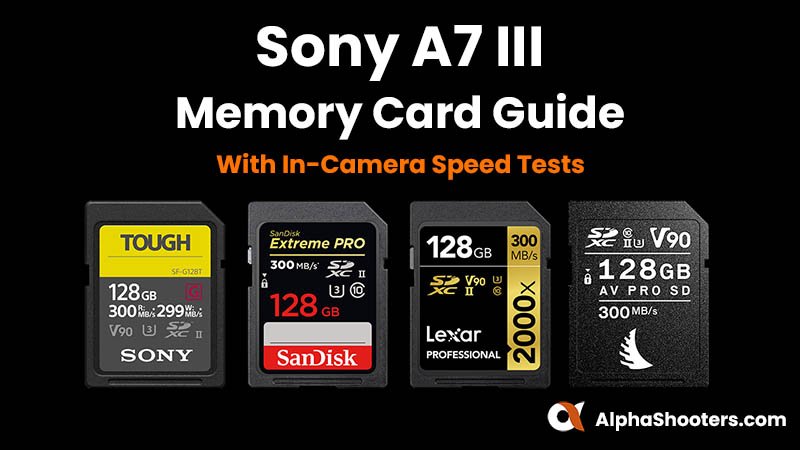
Table of Contents[Hide][Show]
- In-Camera Card Speed Comparison
UHS-II Memory Card Speed & Buffer Tests+−
- 1. SanDisk Extreme Pro UHS-II (300/260)
- 2. Sony SF-G Tough UHS-II (300/299)
- 3. Lexar Professional 2000X UHS-II (300/260)
- 4. Transcend SD 700S UHS-II (285/180)
- 5. Kingston Canvas React Plus UHS-II SDXC Memory Card (300/260)
- 6. Sony SF-M Tough UHS-II (277/150)
- 7. Sony SF-M UHS-II (277/150)
- 8. ProGrade V90 UHS-II (300/250)
- 9. Manfrotto Professional UHS-II (280/250)
- 10. Delkin Devices 64GB POWER UHS-II SDXC (300/250)
- 11. ProGrade V60 UHS-II (250/130)
- 12. Angelbird AV Pro Mk 2 V90 (300/280)
- 13. Lexar Professional 1667X UHS-II (250/120)
- 14. Sony SF-E UHS-II (270/120)
- 15. Sony SF-G UHS-II (300/299) - Obsolete!
- In Camera Write Speed & Buffer Tests
- Simultaneous Recording Slot 1 + Slot 2
- Sort RAW / JPEG
- Which Memory Cards are Compatible?
- What Size Memory Card Do You Need?
- Maximum Number of Still Images Recorded by Memory Card Size
- Video Record Times
- Best Memory Cards for 4k Video
- UHS-I vs UHS-II
- Dual Card Slot Setup Guide
- Summary
- YouTube Video
In-Camera Card Speed Comparison
Best UHS-II Memory Cards
Best UHS-I Memory Cards
These tests were done using my Sony a7 III and 64GB SDXC UHS-I memory cards.
Sony A7 III Price Check at: B&H Photo
If you find this article helpful then you may also like my Sony A7 III Accessories Guide and Lenses Guide.
Sony A7III Forum & Facebook Group
If you are looking for further help and advice on the A7III or would simply like to share your photos, then please head over to our friendly full-frame Forum. If you prefer Facebook then I also run the Sony A7III Shooters Group.
UHS-II Memory Card Speed & Buffer Tests
So far I’ve tested 15 UHS-II memory cards in my own Sony a7III (firmware 3.10 & 4.00) to get an accurate picture of their actual in-camera performance.
All of the cards that I have tested here are 64GB SDXC versions. If you purchase 32GB cards then these use the SDHC format and in my tests they appear to be around 25% slower than larger SDXC capacity cards when shooting in RAW, with JPEGS there is little difference.
Please note: Only slot 1 in the a7III supports the faster UHS-II cards (but is also backwards compatible with UHS-I). Slot 2 supports UHS-I cards which I will be covering next.
1. SanDisk Extreme Pro UHS-II (300/260)
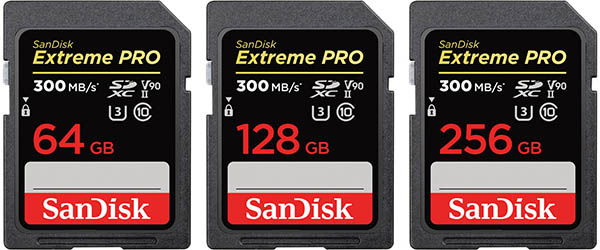
The SanDisk Extreme Pro cards are V90 rated for video. They have a claimed read speed of 300MB/s and a write speed of 260MB/s.
Shooting uncompressed RAW these cards actually have an in-camera write speed of around 147.92MB/s. Here are my in-camera speed test results using a 64GB card:
| Image Type | Shots Before Hitting Buffer | Time to Clear Buffer (Seconds) |
|---|---|---|
| Uncompressed RAW (49.3MB) | 58 | 9.71 |
| Compressed RAW (25MB) | 106 | 13.71 |
| JPEG Extra Fine (18.3MB) | 166 | 53.31 |
| Compressed RAW (25MB) + JPEG Extra Fine (18.3MB) | 79 | 26.73 |
2. Sony SF-G Tough UHS-II (300/299)

Tough memory cards are 18 times stronger than standard SD cards, bend proof to 180N, drop-proof to 5 meters, waterproof to a depth of 5 meters for up to 72 hours (IPX8 rating) and dustproof with an IP6X rating. The cards feature a one-piece ribless structure and don’t have the common lock switch, they are also X-ray proof, magnet proof, anti-static and temperature proof.
The Sony SF-G Tough cards are rated V90 for video and have a claimed read speed of 300MB/s and a write speed of 299MB/s.
Note: Sometimes these cards can be a little tight in the memory card slot compared to standard SD cards.
Shooting uncompressed RAW these cards actually have an in-camera write speed of around 132.50MB/s. Here are my in-camera speed test results using a 64GB card:
| Image Type | Shots Before Hitting Buffer | Time to Clear Buffer (Seconds) |
|---|---|---|
| Uncompressed RAW (49.3MB) | 53 | 11.02 |
| Compressed RAW (25MB) | 104 | 15.07 |
| JPEG Extra Fine (18.3MB) | 166 | 53.06 |
| Compressed RAW (25MB) + JPEG Extra Fine (18.3MB) | 78 | 27.70 |
Important note: When I tested these cards with firmware version 3.10 they were only managing 107.27MB/s when shooting uncompressed RAW, but JPEG speeds were as they should be. I did report this to Sony but didn’t receive any feedback. With the release of firmware version 4.00 I decided to retest them and now they are now managing 132.50MB/s shooting uncompressed RAW, so Sony has definitely tweaked something. However, the Sony SF-G None Tough cards (now obsolete) which have identical write speeds on the label are achieving 147.53MB/s, so I think there is still something wrong and the SanDisk cards are outperforming them because of this.
3. Lexar Professional 2000X UHS-II (300/260)

The Lexar Professional 2000X cards are rated V90 for video and have a claimed read speed of 300MB/s and a write speed of 260MB/s.
Shooting uncompressed RAW these cards actually have an in-camera write speed of around 116.70MB/s. Here are my in-camera speed test results using a 64GB card:
| Image Type | Shots Before Hitting Buffer | Time to Clear Buffer (Seconds) |
|---|---|---|
| Uncompressed RAW (49.3MB) | 49 | 12.23 |
| Compressed RAW (25MB) | 105 | 14.71 |
| JPEG Extra Fine (18.3MB) | 167 | 52.84 |
| Compressed RAW (25MB) + JPEG Extra Fine (18.3MB) | 78 | 27.76 |
4. Transcend SD 700S UHS-II (285/180)
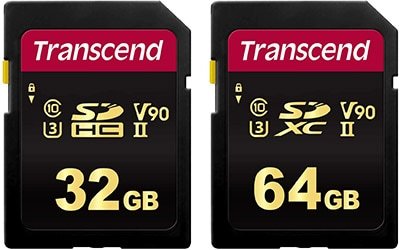
The Transcend SD 700S cards are rated V90 for video and have a claimed read speed of 285MB/s and a write speed of 180MB/s.
Shooting uncompressed RAW these cards actually have an in-camera write speed of around 115.92MB/s. Here are my in-camera speed test results using a 64GB card:
| Image Type | Shots Before Hitting Buffer | Time to Clear Buffer (Seconds) |
|---|---|---|
| Uncompressed RAW (49.3MB) | 49 | 12.42 |
| Compressed RAW (25MB) | 106 | 14.39 |
| JPEG Extra Fine (18.3MB) | 167 | 52.70 |
| Compressed RAW (25MB) + JPEG Extra Fine (18.3MB) | 76 | 27.47 |
5. Kingston Canvas React Plus UHS-II SDXC Memory Card (300/260)

Kingston have been in the memory business since 1987, so it’s safe to say they know a thing or two about memory!
Their Canvas React Plus UHS-II SDXC cards have a claimed read speed of 300MB/s and a write speed of 290MB/s. They are V90 rated and available in 32GB (SDHC), 64GB, 128GB and 256GB sizes.
Shooting uncompressed RAW these cards actually have an in-camera write speed of around 106.97MB/s. Here are my in-camera speed test results using a 64GB card:
| Image Type | Shots Before Hitting Buffer | Time to Clear Buffer (Seconds) |
|---|---|---|
| Uncompressed RAW (49.3MB) | 47 | 13.15 |
| Compressed RAW (25MB) | 111 | 15.23 |
| JPEG Extra Fine (18.3MB) | 173 | 53.88 |
| Compressed RAW (25MB) + JPEG Extra Fine (18.3MB) | 78 | 30.35 |
6. Sony SF-M Tough UHS-II (277/150)

Sony’s SF-M Tough Series are practically identical to the more expensive SF-G Series but their read time has been cut to 277MB/s and the write time to 150MB/s, they are also only rated V60 for video.
Note: Sometimes these cards can be a little tight in the memory card slot compared to standard SD cards.
Shooting uncompressed RAW these cards actually have an in-camera write speed of around 106.38MB/s. Here are my in-camera speed test results using a 64GB card:
| Image Type | Shots Before Hitting Buffer | Time to Clear Buffer (Seconds) |
|---|---|---|
| Uncompressed RAW (49.3MB) | 47 | 13.64 |
| Compressed RAW (25MB) | 100 | 15.63 |
| JPEG Extra Fine (18.3MB) | 167 | 52.80 |
| Compressed RAW (25MB) + JPEG Extra Fine (18.3MB) | 76 | 28.23 |
7. Sony SF-M UHS-II (277/150)

Sony’s SF-M Series are identical to the SF-M Tough Series just without the added toughness so they cost a little less. The Sony SF-M cards are rated V60 for video and have a claimed read speed of 277MB/s and a write speed of 150MB/s just like the Tough version.
Shooting uncompressed RAW these cards actually have an in-camera write speed of around 106.38MB/s. Here are my in-camera speed test results using a 64GB card:
| Image Type | Shots Before Hitting Buffer | Time to Clear Buffer (Seconds) |
|---|---|---|
| Uncompressed RAW (49.3MB) | 47 | 13.66 |
| Compressed RAW (25MB) | 104 | 15.16 |
| JPEG Extra Fine (18.3MB) | 172 | 55.47 |
| Compressed RAW (25MB) + JPEG Extra Fine (18.3MB) | 77 | 28.55 |
8. ProGrade V90 UHS-II (300/250)
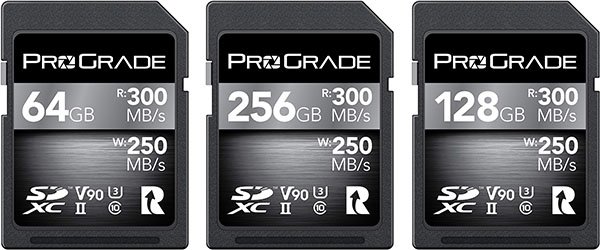
The ProGrade V90 cards are rated V90 for video and have a claimed read speed of 300MB/s and a write speed of 250MB/s.
Shooting uncompressed RAW these cards actually have an in-camera write speed of around 106.04MB/s. Here are my in-camera speed test results using a 64GB card:
| Image Type | Shots Before Hitting Buffer | Time to Clear Buffer (Seconds) |
|---|---|---|
| Uncompressed RAW (49.3MB) | 47 | 13.74 |
| Compressed RAW (25MB) | 98 | 15.63 |
| JPEG Extra Fine (18.3MB) | 171 | 56.37 |
| Compressed RAW (25MB) + JPEG Extra Fine (18.3MB) | 78 | 27.97 |
9. Manfrotto Professional UHS-II (280/250)
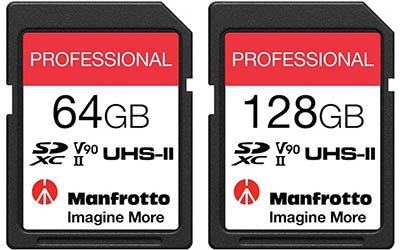
The Manfrotto Professional cards are rated V90 for video and have a claimed read speed of 280MB/s and a write speed of 250MB/s.
Shooting uncompressed RAW these cards actually have an in-camera write speed of around 105.46MB/s. Here are my in-camera speed test results using a 64GB card:
| Image Type | Shots Before Hitting Buffer | Time to Clear Buffer (Seconds) |
|---|---|---|
| Uncompressed RAW (49.3MB) | 47 | 13.85 |
| Compressed RAW (25MB) | 96 | 15.93 |
| JPEG Extra Fine (18.3MB) | 172 | 55.97 |
| Compressed RAW (25MB) + JPEG Extra Fine (18.3MB) | 77 | 27.92 |
Price Check & Buyer Reviews for Manfrotto Professional UHS-II
At: Manfrotto
10. Delkin Devices 64GB POWER UHS-II SDXC (300/250)
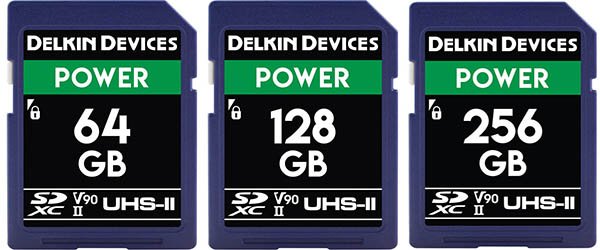
The Delkin Devices 64GB POWER UHS-II SDXC memory cards support read speeds of up to 300 MB/s and write speeds of 250 MB/s. They are also V90 rated for video.
Shooting uncompressed RAW these cards actually have an in-camera write speed of around 105.38 MB/s. Here are my in-camera speed test results using a 64GB card:
| Image Type | Shots Before Hitting Buffer | Time to Clear Buffer (Seconds) |
|---|---|---|
| Uncompressed RAW (49.3MB) | 46 | 13.70 |
| Compressed RAW (25MB) | 88 | 19.91 |
| JPEG Extra Fine (18.3MB) | 164 | 55.49 |
| Compressed RAW (25MB) + JPEG Extra Fine (18.3MB) | 75 | 32.93 |
11. ProGrade V60 UHS-II (250/130)
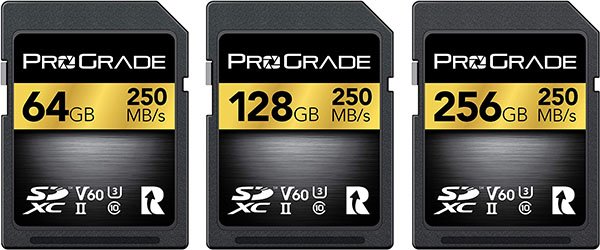
The ProGrade V60 cards are rated V60 for video and have a claimed read speed of 250MB/s and a write speed of 130MB/s.
Shooting uncompressed RAW these cards actually have an in-camera write speed of around 97.30MB/s. Here are my in-camera speed test results using a 64GB card:
| Image Type | Shots Before Hitting Buffer | Time to Clear Buffer (Seconds) |
|---|---|---|
| Uncompressed RAW (49.3MB) | 45 | 15.02 |
| Compressed RAW (25MB) | 92 | 17.42 |
| JPEG Extra Fine (18.3MB) | 172 | 55.63 |
| Compressed RAW (25MB) + JPEG Extra Fine (18.3MB) | 76 | 30.66 |
12. Angelbird AV Pro Mk 2 V90 (300/280)
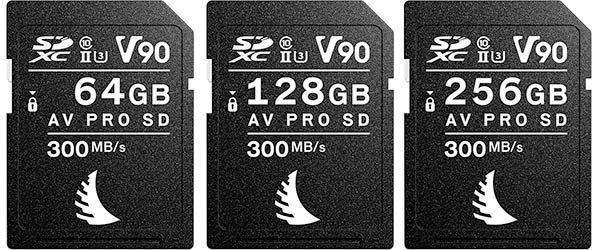
The Angelbird AV Pro Mk 2 V90 UHS-II memory cards support read speeds of up to 300 MB/s and write speeds of 280 MB/s. They are also V90 rated so they guarantee a minimum write speed of 90 MB/s.
Shooting uncompressed RAW these cards actually have an in-camera write speed of around 97.66 MB/s. Here are my in-camera speed test results using a 64GB card:
| Image Type | Shots Before Hitting Buffer | Time to Clear Buffer (Seconds) |
|---|---|---|
| Uncompressed RAW (49.3MB) | 44 | 14.88 |
| Compressed RAW (25MB) | 91 | 18.24 |
| JPEG Extra Fine (18.3MB) | 164 | 55.79 |
| Compressed RAW (25MB) + JPEG Extra Fine (18.3MB) | 77 | 28.50 |
13. Lexar Professional 1667X UHS-II (250/120)
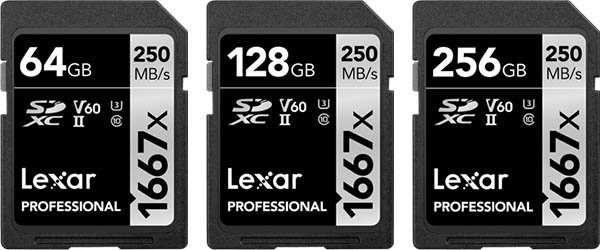
The Lexar 1667X UHS-II SD cards have a claimed read speed of 250MB/s and a write speed of 120MB/S. They are V60 rated for video and available in 64GB, 128GB and 256GB capacities.
Shooting uncompressed RAW these cards actually have an in-camera write speed of around 89.68MB/s. Here are my in-camera speed test results using a 64GB card:
| Image Type | Shots Before Hitting Buffer | Time to Clear Buffer (Seconds) |
|---|---|---|
| Uncompressed RAW (49.3MB) | 42 | 16.03 |
| Compressed RAW (25MB) | 91 | 18.04 |
| JPEG Extra Fine (18.3MB) | 163 | 56.87 |
| Compressed RAW (25MB) + JPEG Extra Fine (18.3MB) | 72 | 37.26 |
14. Sony SF-E UHS-II (270/120)
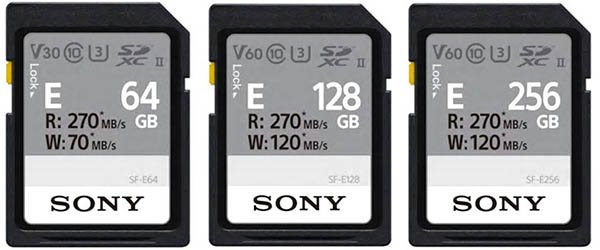
The Sony SF-E UHS-II SD cards are the lowest cost UHS-II compatible cards that Sony currently sells. They have a claimed read speed of 270MB/s and a write speed of 70MB/s for the 64GB card and 120MB/s for the larger 128GB and 256GB cards. They are also V60 rated for video.
Shooting uncompressed RAW these cards have an in-camera write speed of around 69.43MB/s. This is actually slower than the SanDisk Extreme Pro UHS-I cards!! Here are my in-camera speed test results using a 64GB card:
| Image Type | Shots Before Hitting Buffer | Time to Clear Buffer (Seconds) |
|---|---|---|
| Uncompressed RAW (49.3MB) | 39 | 21.23 |
| Compressed RAW (25MB) | 82 | 23.14 |
| JPEG Extra Fine (18.3MB) | 165 | 54.79 |
| Compressed RAW (25MB) + JPEG Extra Fine (18.3MB) | 71 | 40.56 |
15. Sony SF-G UHS-II (300/299) – Obsolete!
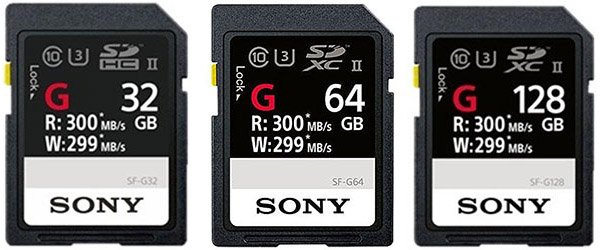
The Sony SF-G UHS-II memory cards are one of the fastest sd cards that you can put in the a7III but sadly for some reason Sony has decided to obsolete them. You might still find them in some stores but most of the larger reputable dealers no longer have them in stock.
The Sony SF-G cards are rated U3 and have a claimed read speed of 300MB/s and a write speed of 299MB/s.
Shooting uncompressed RAW these cards have an in-camera write speed of around 147.53MB/s. Here are my in-camera speed test results using a 64GB card:
| Image Type | Shots Before Hitting Buffer | Time to Clear Buffer (Seconds) |
|---|---|---|
| Uncompressed RAW (49.3MB) | 60 | 9.75 |
| Compressed RAW (25MB) | 98 | 15.97 |
| JPEG Extra Fine (18.3MB) | 171 | 56.18 |
| Compressed RAW (25MB) + JPEG Extra Fine (18.3MB) | 79 | 27.13 |
UHS-I Memory Card Speed & Buffer Tests
Because memory card slot 2 only supports UHS-I cards there is very little point in using the more expensive UHS-II cards in this slot, unless of cause you want to enjoy faster read times when using a UHS-II card reader.
So far I’ve tested 5 UHS-I memory cards in my Sony a7III.
1. SanDisk Extreme Pro UHS-I (170/90)
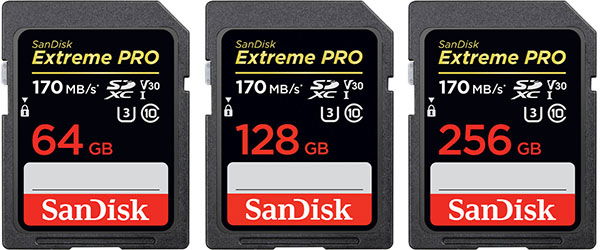
The SanDisk Extreme Pro cards are rated V30 for video and have a claimed read speed of 170MB/s and a write speed of 90MB/s.
Shooting uncompressed RAW these cards actually have an in-camera write speed of around 75MB/s. Here are my in-camera speed test results:
| Image Type | Shots Before Hitting Buffer | Time to Clear Buffer (Seconds) |
|---|---|---|
| Uncompressed RAW (49.3MB) | 40 | 19.21 |
| Compressed RAW (25MB) | 90 | 21.31 |
| JPEG Extra Fine (18.3MB) | 166 | 53.00 |
| Compressed RAW (25MB) + JPEG Extra Fine (18.3MB) | 72 | 39.97 |
2. SanDisk Extreme UHS-I (150/70)

The SanDisk Extreme cards are rated V30 for video and have a claimed read speed of 150MB/s and a write speed of 70MB/s.
Shooting uncompressed RAW these cards actually have an in-camera write speed of around 68.67MB/s. Here are my in-camera speed test results:
| Image Type | Shots Before Hitting Buffer | Time to Clear Buffer (Seconds) |
|---|---|---|
| Uncompressed RAW (49.3MB) | 39 | 21.35 |
| Compressed RAW (25MB) | 88 | 23.18 |
| JPEG Extra Fine (18.3MB) | 171 | 56.65 |
| Compressed RAW (25MB) + JPEG Extra Fine (18.3MB) | 69 | 51.27 |
3. Sony Professional Series UHS-I (95/90)

The Sony Professional Series cards are rated U3 and have a claimed read speed of 95MB/s and a write speed of 90MB/s.
Shooting uncompressed RAW these cards actually have an in-camera write speed of around 68.23MB/s. Here are my in-camera speed test results:
| Image Type | Shots Before Hitting Buffer | Time to Clear Buffer (Seconds) |
|---|---|---|
| Uncompressed RAW (49.3MB) | 39 | 21.51 |
| Compressed RAW (25MB) | 88 | 23.10 |
| JPEG Extra Fine (18.3MB) | 171 | 56.59 |
| Compressed RAW (25MB) + JPEG Extra Fine (18.3MB) | 70 | 44.95 |
Price Check & Buyer Reviews for Sony Professional Series UHS-I
At: Amazon
4. Sony Expert Series UHS-I (94/70)
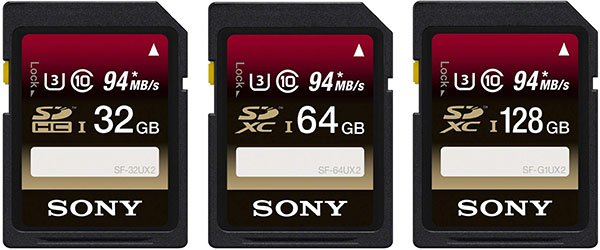
The Sony Expert Series cards are rated U3 and have a claimed read speed of 94MB/s and a write speed of 70MB/s.
Shooting uncompressed RAW these cards actually have an in-camera write speed of around 59.13MB/s. Here are my in-camera speed test results:
| Image Type | Shots Before Hitting Buffer | Time to Clear Buffer (Seconds) |
|---|---|---|
| Uncompressed RAW (49.3MB) | 38 | 25.03 |
| Compressed RAW (25MB) | 82 | 26.08 |
| JPEG Extra Fine (18.3MB) | 171 | 56.69 |
| Compressed RAW (25MB) + JPEG Extra Fine (18.3MB) | 70 | 44.90 |
Price Check & Buyer Reviews for Sony Expert Series UHS-I
At: Amazon
5. Transcend 500S UHS-I (95/60)

The Transcend 500S cards are rated V30 for video and have a claimed read speed of 95MB/s and a write speed of 60MB/s.
Shooting uncompressed RAW these cards actually have an in-camera write speed of around 38.45MB/s. Here are my in-camera speed test results:
| Image Type | Shots Before Hitting Buffer | Time to Clear Buffer (Seconds) |
|---|---|---|
| Uncompressed RAW (49.3MB) | 35 | 38.90 |
| Compressed RAW (25MB) | 74 | 40.21 |
| JPEG Extra Fine (18.3MB) | 158 | 71.84 |
| Compressed RAW (25MB) + JPEG Extra Fine (18.3MB) | 67 | 76.26 |
In Camera Write Speed & Buffer Tests
The tests that I perform to work out the fastest memory cards for the a7III are fairly straight forward.
I use my Sony FE 24mm F1.4 GM lens, manually focus on my target (1/1000th Sports Photography of Bob Martin), set the aperture to f/1.4, shutter minimum of 1/100, ISO to 100 and Drive Mode to Hi+ for the maximum frames per second.
I fire off a burst of shots before starting the test because for some reason the first write is often much slower than subsequent writes for many of the cards.
I then press the shutter button and time how long it takes before the buffer is full (when the LCD goes blank and shooting slows). I also time how long it takes for the buffer to clear. I repeat this test until I get 3 results with the identical number of shots taken. I then average the buffer clearing time and total time of these 3 results.
This will give me the number of shots taken before filling the buffer, the average time taken to clear the buffer and the average total time from start to finish.
The faster the memory card the more shots you will be able to take before filling the buffer, this is because files are also being written to the SD card whilst shooting thus clearing the buffer for more shots.
I do this test shooting uncompressed raw, compressed raw, extra fine jpegs and raw + extra fine jpegs.
I calculate the average in-camera write speed by taking the number of uncompressed raw shots, multiplying this by the file size (49.3MB) then dividing by the total time taken to shoot and clear the buffer.
Simultaneous Recording Slot 1 + Slot 2
If you want to record simultaneously to both slots 1 and 2 at the same time then there is no benefit to using a UHS-II memory card in slot 1.
With this setup the write speed is restricted to the maximum write speed of the UHS-I card in slot 2. So if you shoot like this often you can save money by using UHS-I cards in slot 1.
The only benefit to using a UHS-II card when shooting simultaneously is to enjoy the faster read times when copying the files to your computer.
Sort RAW / JPEG
This setup is also slower than writing to a single card but unlike simultaneous recording there are still benefits to using UHS-II cards in slot 1 but only when shooting uncompressed raw.
The fastest setup here is to shoot RAW to slot 1 with a UHS-II card, then JPEGs to slot 2 with a UHS-I card, but here’s a little more information on this setup.
If you record uncompressed RAW files to slot 1 (with a UHS-II card) and extra fine JPEGs to slot 2 (with a UHS-I card) this will reduce the shots that you can take before filling the buffer from around 58 to 46 (compared with single slot recording) and also increase the time to clear the buffer by around 4 seconds. If you use a UHS-I card in slot 1 then this slows down further to around 39 shots and increases the time to clear the buffer by an extra 11 seconds compared to writing to a single card.
If you record compressed RAW files to slot 1 (with a UHS-II card) and extra fine JPEGs to slot 2 (with a UHS-I card) this will reduce the shots that you can take before filling the buffer from around 106 to 79 (SanDisk Extreme Pro UHS-II) and also increase the time to clear the buffer by around 13 seconds (compared with single slot recording). If you now use a UHS-I card in slot 1 then then the figures stay roughly the same as using a UHS-II card due to the additional compression overhead slowing things down and wiping out the UHS-II speed benefits.
Which Memory Cards are Compatible?
Slot 1: The Sony a7III supports SD/SDHC/SDXC UHS-II + UHS-I memory cards in slot 1 only, this is the fastest card slot.
Slot 2: Only SD/SDHC/SDXC UHS-I memory cards are supported. UHS-II cards will still work in slot 2 but you won’t get the speed benefit, they simply default to UHS-I speeds. I tested the Sony SF-G UHS-II cards in slot 2 and they were 0.05 seconds slower than the SanDisk Extreme Pro UHS-I cards.
You can also use microSD memory cards with this camera providing you use an appropriate adaptor.
What Size Memory Card Do You Need?
For shooting stills I would recommend a minimum memory card size of 64GB.
For each memory card this will give you around 3500 images if you shoot JPEG (Extra Fine) only, 1750 images when shooting RAW & JPEG (Compressed RAW), 2400 RAW only images (Compressed RAW), 1000 RAW & JPEG images (Uncompressed RAW) and 1200 images shooting uncompressed RAW.
If you are shooting a lot of continuous bursts then you might want to use 128GB cards instead.
For shooting video the size of memory card will depend on the format that you are recording in.
The following two tables should help you to decide which size memory card you will need depending on your recording settings for both stills and video.
Maximum Number of Still Images Recorded by Memory Card Size
The table below shows the approximate number of images that can be recorded on a memory card formatted within the a7III. These numbers may vary depending on the shooting conditions and the type of memory card used, so please use these figures as a rough guide only.
| JPEG Quality / File Format | 32GB | 64GB | 128GB | 256GB |
|---|---|---|---|---|
| Standard: | 4600 | 9200 | 18400 | 36000 |
| Fine: | 3200 | 6400 | 12800 | 25000 |
| Extra Fine: | 1750 | 3500 | 7000 | 14000 |
| RAW & JPEG (Compressed RAW): | 870 | 1750 | 2840 | 7000 |
| RAW (Compressed RAW): | 1200 | 2400 | 4800 | 9600 |
| RAW & JPEG (Uncompressed RAW): | 510 | 1000 | 2000 | 4100 |
| RAW (Uncompressed RAW): | 610 | 1200 | 2400 | 4950 |
Video Record Times
The table below shows the approximate total recording times using a memory card formatted within the a7III camera. The values may vary depending on the shooting conditions and the type of memory card used.
| Video Format | 32Gb | 64GB | 128GB | 256GB |
|---|---|---|---|---|
| XAVC S 4K 30p 100M/25p 100M | 35min | 1h 15min | 2h 30min | 5h 5min |
| XAVC S 4K 30p 60M/25p 60M | 55min | 2h | 4h | 8h 5min |
| XAVC S 4K 24p 100M | 35min | 1h 15min | 2h 30min | 5h 5min |
| XAVC S 4K 24p 60M | 55min | 2h | 4h | 8h 5min |
| XAVC S HD 120p 100M/100p 100M | 35min | 1h 15min | 2h 30min | 5h 5min |
| XAVC S HD 120p 60M/100p 60M | 55min | 2h | 4h | 8h 5min |
| XAVC S HD 60p 50M/50p 50M | 1h 10min | 2h 25min | 5h | 10h |
| XAVC S HD 60p 25M/50p 25M | 2h 20min | 4h 45min | 9h 30min | 19h 25m |
| XAVC S HD 30p 50M/25p 50M | 1h 10min | 2h 25min | 5h | 10h |
| XAVC S HD 30p 16M/25p 16M | 3h 35min | 7h 20min | 14h 40m | 29h 55m |
| XAVC S HD 24p 50M | 1h 10min | 2h 25min | 5h | 10h |
| AVCHD 60i 24M(FX)/50i 24M(FX) | 2h 55min | 6h | 12h | 24h 15m |
| AVCHD 60i 17M(FH)/50i 17M(FH) | 4h 5min | 8h 15m | 16h 30m | 33h 15m |
The duration of time available for movie recording varies depending on the file format/recording settings for movies, memory card, ambient temperature, Wi-Fi network environment, condition of the camera before you start recording, and condition of the charging of the battery.
Continuous shooting is possible for approximately 29 minutes (a product specification limit) at which time the recording will end and you will need to press record again.
Best Memory Cards for 4k Video
The Sony a7III supports a maximum of 100Mbps 4k video which is around 12.5 MB/s. Therefore you don’t require the fastest memory cards for 4k video recording.
Any memory cards that are rated v30, v60, v90 card will work perfectly for shooting 4k video.
Cards that are 32GB and smaller are labelled as SDHC memory cards. These are formatted to 32-bit and video files will be broken-up into 4GB chunks. This means extra work in post to put all of these files together.
Cards that are 64GB and larger in capacity are labelled as SDXC cards, these are formatted with a 64-bit file system and your files will not be broken up into smaller chunks.
For video I’d recommend 64GB or larger SDXC cards. I’d recommend a card like the SanDisk Extreme PRO 128GB SDXC Memory Card.
UHS-I vs UHS-II
As already mentioned the Sony a7III has two memory card slots. Slot 1 supports the fastest UHS-II cards and Slot 2 the slower UHS-I cards.
UHS-I SD cards have write speeds up to around 100MB/s and read speeds of around 170MB/s. UHS-II compatible cards increase this speed by adding a second row of contacts to the card, these cards are now capable of writing and reading up to around 300MB/s.
But this extra speed comes at a cost as UHS-II cards are more expensive then UHS-I cards and I’d only recommend buying them for your a7III if you do a lot of shooting in continuous bursts and you want to get the maximum number of shots before the buffer fills along with the fastest clearing time.
If you only shoot single shots and therefore don’t require the speed benefits of the faster UHS-II cards then you can save a small fortune by purchasing UHS-I cards instead.
Memory Card Readers & Protective Cases
Sony MRW-S1 High Speed UHS-II USB Memory Card Reader/Writer
Sony’s MRW-S1 UHS-II USB SD Card Reader/Writer enables the fast transfer of data via a USB 3.1 interface. It can read/write to UHS-II SD Cards and is backward compatible with UHS-I SD cards. The MRW-S1 together with Sony SF-G cards can transfer files to and from your computer at around 2.6x faster than UHS-I cards. It also works perfectly with other UHS-II cards like the SanDisk Extreme.
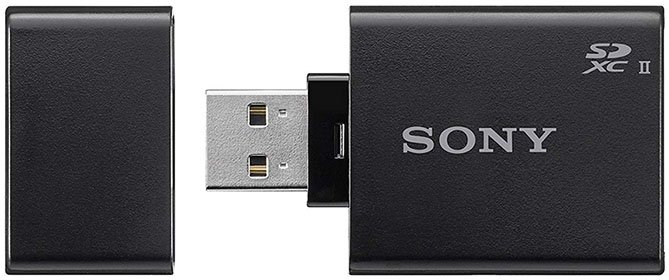
Beeway Water & Shock Resistant Memory Card Case
The Beeway SD Card holder holds 12 SD/SDHC/SDXC cards and 12 MicroSD cards perfectly in place. The case is water resistant, very strong and also includes a small bag and a carabiner.
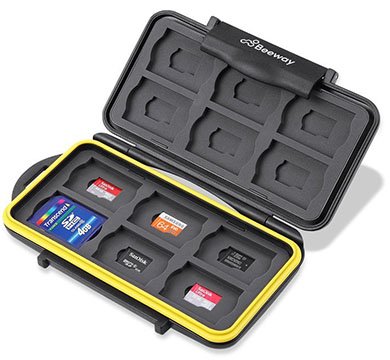
Price Check & Buyer Reviews for Beeway Memory Card Case
At: Amazon
Dual Card Slot Setup Guide
If you are having a tough time understanding and setting up dual card slot recording with your a7III then I’ve created a setup guide that should hopefully help.
If you don’t care much for video then you’ll also find a written version of this dual card setup guide here.
Summary
The Sony SF-G UHS-II (300/299) cards came out on top for speed by a fraction when shooting uncompressed RAW but Sony has discontinued these cards.
Shooting compressed RAW the SanDisk Extreme Pro UHS-II (300/260) came out on top but again only by a fraction.
The Sony SF-G Tough UHS-II (300/299) are performing better with a7III firmware version 4.00 than they did with v3.10, but they are still a little slower than the now obsolete none tough version.
Although the SanDisk Extreme Pro UHS-II (300/260) are one of the fastest cards no matter what file format you are using, they aren’t that much faster than the Sony SF-M cards, especially for the extra cost. At time of writing they cost $97.99 for a 64GB card (B&H | Amazon).
So I’d actually recommend the Sony SF-M UHS-II, which when shooting uncompressed raw cleared the buffer only 3 seconds slower than the SanDisk, compressed raw 2 seconds slower, and JPEG the speeds are the same. At time of writing the Sony SF-M UHS-II costs $39.99 for a 64GB card (B&H | Amazon). Or there’s the Sony SF-M Tough UHS-II which at time of writing costs $44.99 for a 64GB card (B&H | Amazon). I prefer the extra durability of the Tough cards myself, but sometimes they can be tight in the card slot.
If you prefer shooting in JPEG file format than RAW then the extra overhead from compressing the files really hits the write times and there is no benefit to buying the more expensive UHS-II cards for slot 1. Instead I would recommend the SanDisk Extreme Pro UHS-I (170/90) cards. However, if you still want to benefit from the faster read times to your computer (you can read UHS-II cards over twice as fast as UHS-I cards when using a UHS-II card reader), then go with the Sony SF-M UHS-II cards.
If you shoot both JPEG + Compressed RAW to slot 1, then there is still a speed benefit to using UHS-II cards. With this setup the SanDisk Extreme Pro UHS-II (300/260) recorded 79 shots and cleared the buffer in 26.73 seconds, this compares to 72 shots cleared in 39.97 seconds with the SanDisk Extreme Pro UHS-I (170/90) card in slot 1.
If you record simultaneously to both slots 1 and 2 then the write speed is restricted to the maximum write speed of the UHS-I card in slot 2. So if you shoot like this often you can save money by using UHS-I cards in slot 1.
If you want to record RAW files to one slot and JPEGs to the other slot then this is slower than writing to a single card. There is however still a benefit to using UHS-II cards in slot 1 if you shoot uncompressed RAW to slot 1 and JPEGs to slot 2. But if you shoot compressed RAW to slot 1 and JPEGs to slot 2 there is no benefit to using UHS-II cards in slot 1.
I’d recommend the SanDisk Extreme Pro UHS-I (170/90) cards for 4k video as these are V30 / U3 rated. You don’t need faster cards for 4k video in the a7III as it supports a maximum of 4k 100Mbps which is around 12.5 MB/s.
If you don’t shoot a lot of continuous bursts then you don’t really need UHS-II cards and I’d also recommend the SanDisk Extreme Pro UHS-I (170/90) cards.
Of course, in-camera write speed isn’t everything, the card read speed can also be very important. So if you often get frustrated waiting for files to copy from your SD cards to your computer then you might still want to go for the faster UHS-II cards simply for the faster read speeds or to future-proof yourself.
YouTube Video
I’ve also created a YouTube video covering the highlights of this article if you are interested.

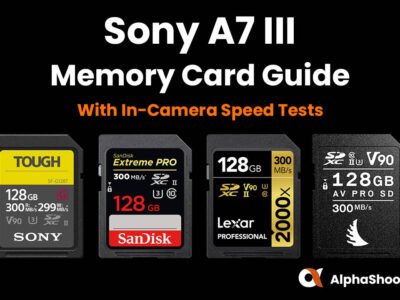
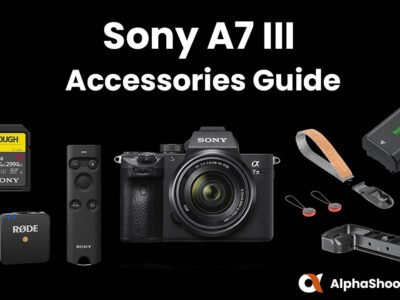
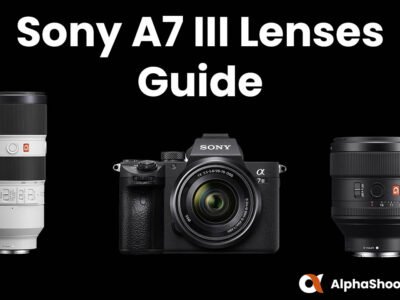
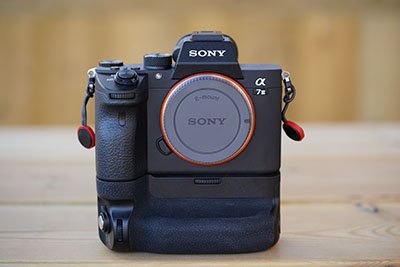
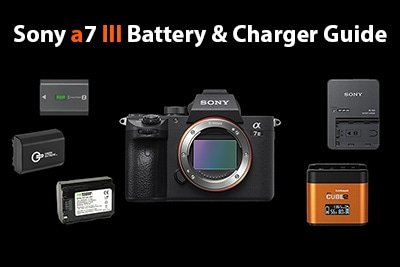
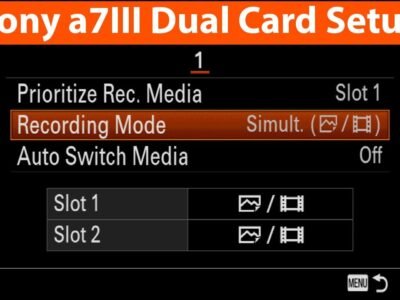




“If you record simultaneously to both slots 1 and 2 then the write speed is restricted to the maximum write speed of the UHS-I card in slot 2. So if you shoot like this often you can save money by using UHS-I cards in slot 1.”
Hello! May I ask if the above you mentioned in the article means recording jpeg+compressed raw in slot 1 and slot 2 at the same time? Thanks!
Hello
for you and for astrophotography…. what should be the best SDXC card? thanks
Since you won’t be shooting a lot of continuous bursts you will only really need a UHS-I SD card. Something like the SanDisk Extreme Pro UHS-I SD card will be fine for this. But if you want to copy the images over to your computer as fast as possible then the SanDisk Extreme Pro UHS-II SD card would be the better option.
Looks like some of the numbers in the 256 GB column of the Maximum Number of Still Images Recorded by Memory Card Size table are wrong. Possibly cut off one digit???
Thanks for spotting that JM! Corrected now! 🙂
Hey! There are some hobbiest shooters out there like me that only really like spending the $$$$ on good glass!
I’ve always used $16 Sandisk Extreme 128g microSDXC cards (with the adapter which has a write speed of 190mb/s) in my cameras and don’t really have any complaints with them. Was curious how these cards would stack up against the full size ones in this article! How did you calculate the true write speed? I feel like these microSD cards would rank #1 in the UHS-1 class here!
When it comes to the fastest write speeds for SD cards compatible with the A7R III, can you recommend what card would be best if I want the fastest write speeds between exposures? I shoot a lot of time-lapse and I often want speedy buffer and write times so I manage the shortest intervals. Most often the fastest my Sony SD card and A7R III can manage are 3 second intervals (exposure + write time.) Exposures over :01 require and even longer interval of :04 or more and that’s too long.
I’ve not yet tested the cards here in the a7RIII but it’s on my list. I’ve just tried the Sony SF-M UHS-II in slot 1 using uncompressed raw and an interval of 1 second. It didn’t appear that the buffer was an issue as it never went over 2 shots. It recorded 100 shots in 100 seconds, so doesn’t appear to have fallen behind.
Thank you very much!!
That was very helpful for me!
This is very helpful.
I’m wondering if a UHS-II card in slot 1 would provide any benefits over UHS-I for astrophotogrpahy?
You mention if you’re not shooting a lot of bursts then the II won’t provide much benefit over the I. But with long exposure astrophotos, writing the photo to the card after the exposure is painfully long with my current UHS-I card. It seems like it takes just as long to process the shot as the length of the exposure! Even though it’s not a burst, would the II speed up the process?
Hi Harry. A UHS-II card won’t help you here Harry. I think the issue that you are experiencing is that you have “Long Exposure Noise Reduction” turned on in the camera. This basically takes two photos, so after your first exposure it will capture a second for the same duration. You can read more about it here. You might want to experiment with turning it off and processing images in post instead. All the best, Tim
May I ask you – for the Sony A7RIII, a lens vendor sent an SD card “ZoomSpeed 64GB Ultra 4K High Speed Premium SDHC/XC Memory Card 120MB/S- Class 10” however, the card does not indicate a U3 rating (just Class 10). In the Sony user manual to record in 4K/HD 100Mbps formats it lists U3. Trying to determine if this card is fast enough. Thank you, Bob Silverheart
Hi Bob. If it’s just Class 10 then this is UHS Speed Class U1 of Video Speed Class V10 and 4k recording probably won’t work. Sadly they probably sent you the cheapest free card they could find!
Thank you for all of this great + detailed information! Wondering if you ever learned anything about the slower actual write speed of the Sony Tough cards with the a7iii mentioned above?
Hi Brian. I’ve not learned anything new regarding the Tough cards unfortunately. Sony wanted me to send my camera in but since I know my camera is not at fault I politely declined and they didn’t appear to be interested in testing it themselves. Maybe this will receive a quiet update when the next firmware is released, I’ll definitely be checking.
Copy that, thanks! I’m sure I would not have sent my camera in either….
This was very helpful. Thank you for posting such an insightful article
Glad to hear that you found it helpful Charan! 🙂
Could you test the Promaster Velocity Cine cards that are available at most independent brick and mortar, local camera stores. Not every store carry the ones you’ve tested unless you only buy online and don’t support local camera stores.
Will see if I can get hold of some for my next tests Andy. I think it will be hard to beat the SanDisk UHS-II cards though, they should be in most local stores I would have thought. All the best, Tim
Looking into these Promaster Velocity Cine cards further it seems that they are not so easy to buy in the UK I’m afraid Andy. Also reading on the manufacturers website there is the following warning:
“WARNING: This product can expose you to chemicals including Diisononyl Phthalate (DINP), which is known to the State of California to cause cancer and Bisphenol A (BPA), which is known to the State of California to cause birth defects and/or other reproductive harm. For more information go to http://www.P65Warnings.ca.gov.”
So I probably won’t be touching these cards anytime soon. I’ve not seen similar warnings on other cards that I’ve tested but will do a little more research on this now that I’m aware of it.
This is very useful, thank you.
SD cards are said to fail in time.
Thom Hogan gives them about 3 years before replacement I think – the usual body upgrade cycle time for his pro DSLRs.
Thank you Ern. I’ll be testing the cards in my other cameras as well over the next few weeks. I cycle my cards quite a lot and haven’t had one fail yet, but I know it’s just a matter of time. It sounds like good advice to swap them out every 3 years or so.